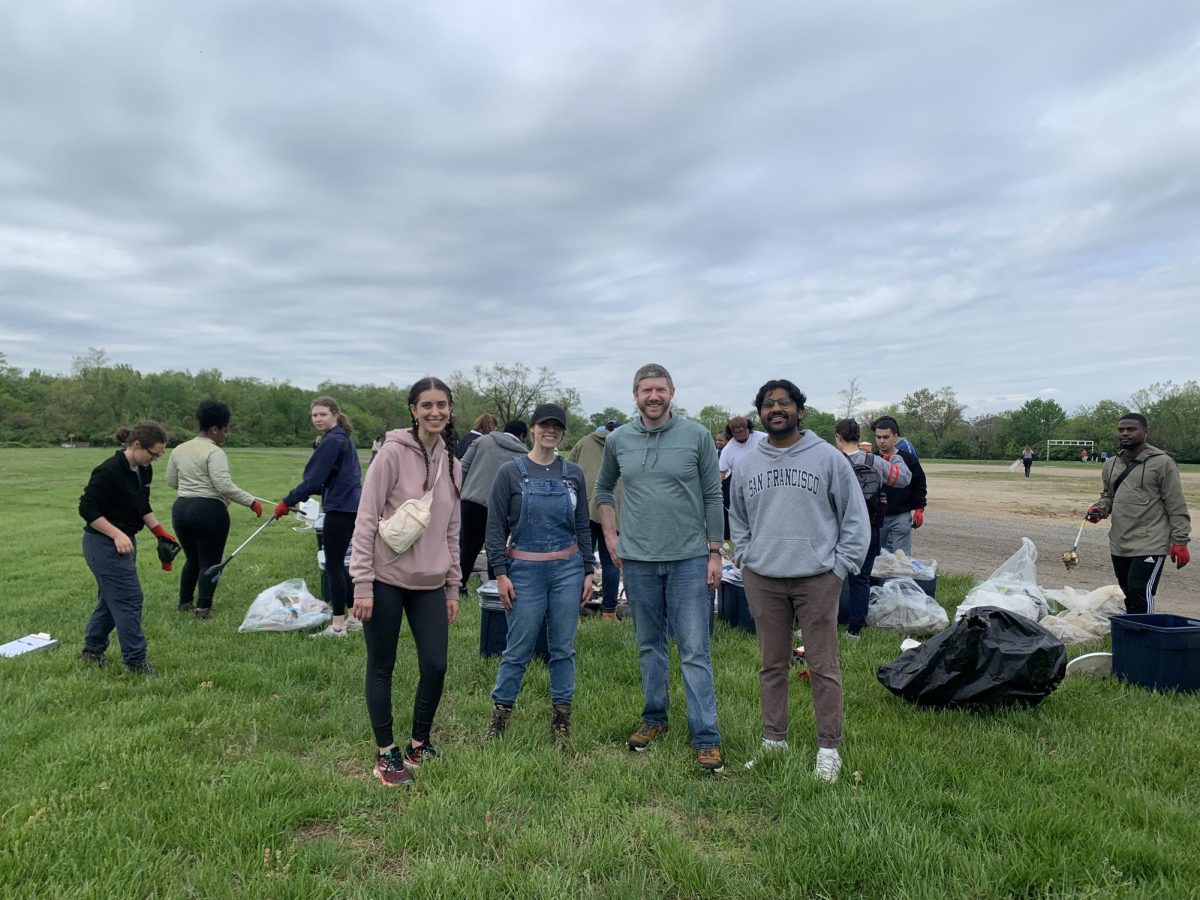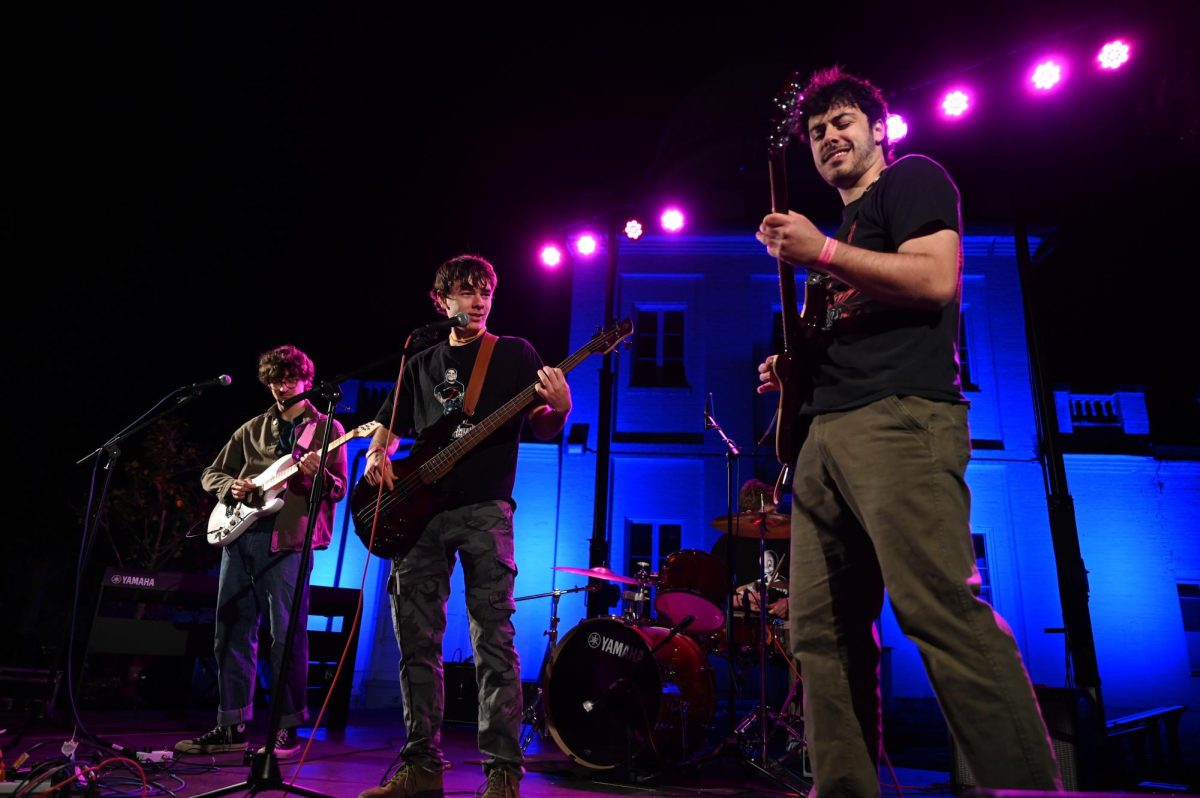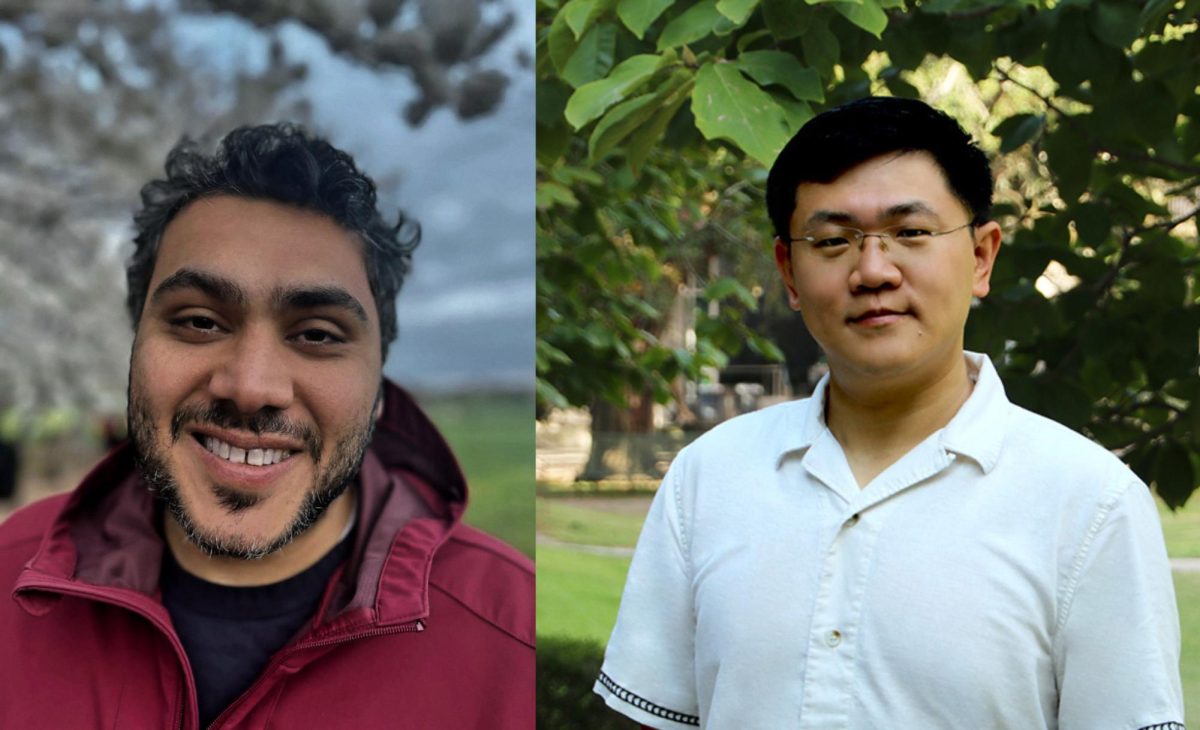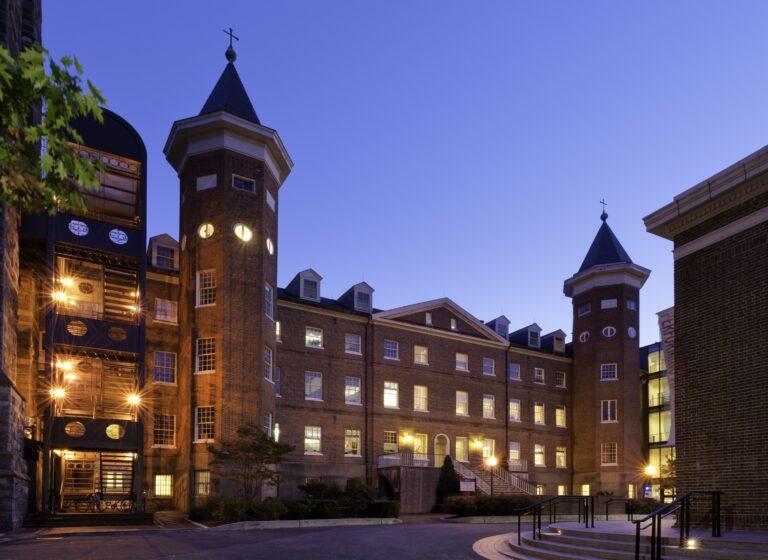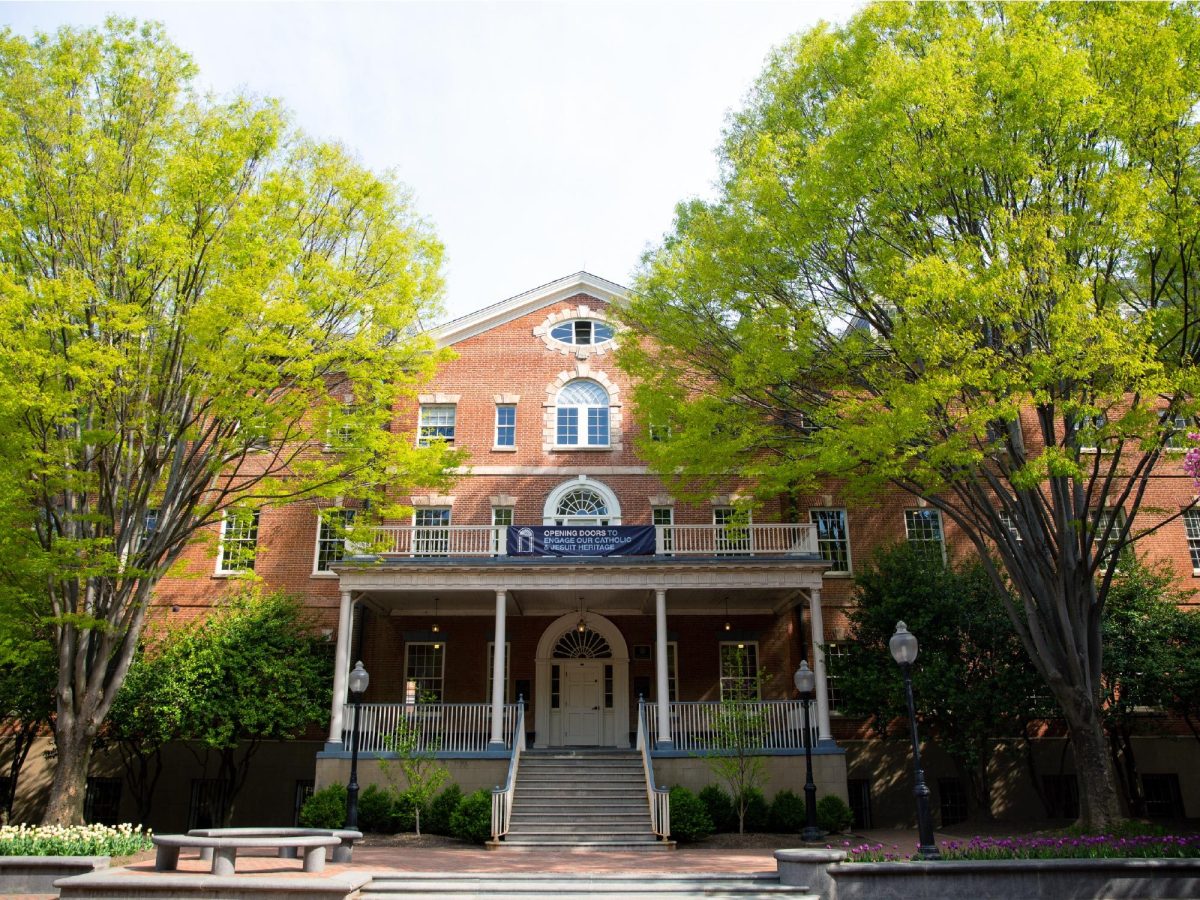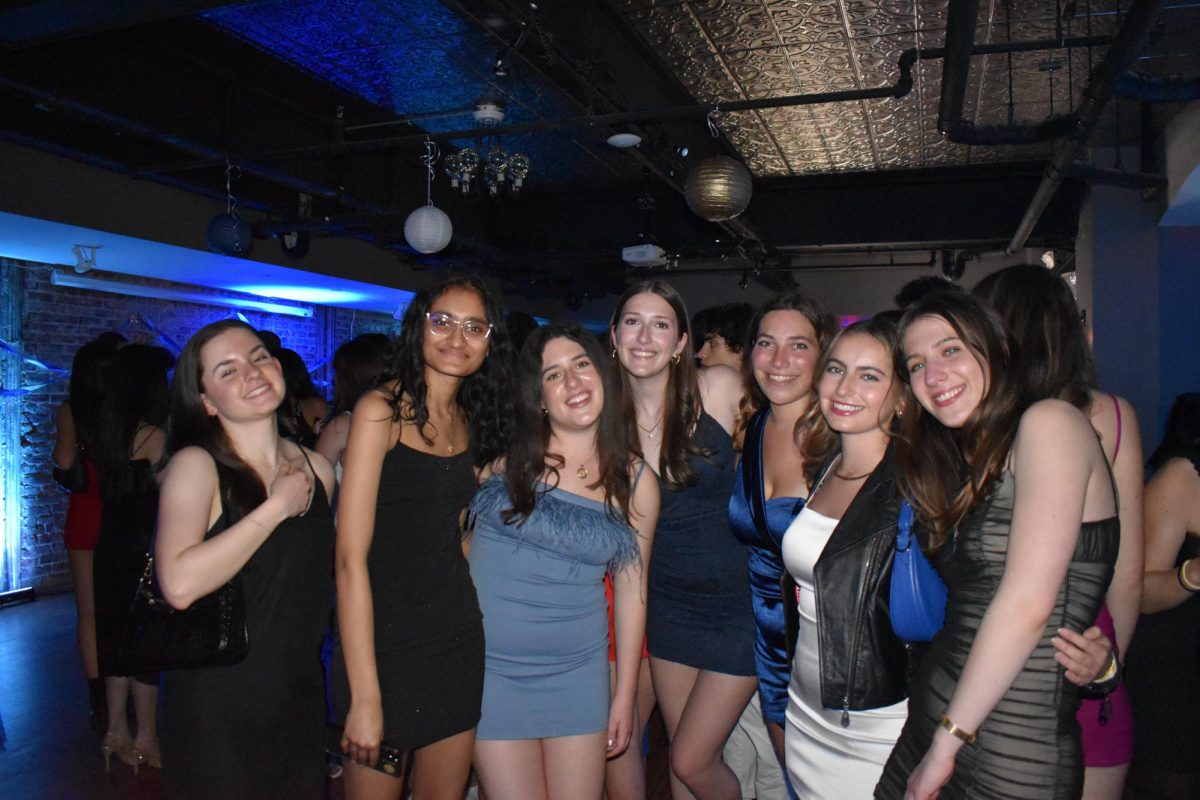Five teams of graduate students presented pitches to address policy issues in the Washington, D.C. area at the McCourt School’s Public Policy Challenge, an annual graduate policy innovation competition, April 5.
Out of 40 applying teams, each with two to five graduate students, judges selected five groups to advance to the presentation stage. The winning team’s pitch, “Trimming the Risk,” proposed partnerships between medical students and barbershops to bring blood pressure checks to a wider range of residents.
Jaclyn Clevenger, the McCourt School’s director of student engagement and the founder of the Public Policy Challenge, said the judges had specific criteria centered on how effectively each pitch would address its focal problem in mind when choosing the first-place winner.
“When evaluating proposals, judges look for multiple things: successfully defining the problem, demonstrating the potential impact of the idea, demonstrating the feasibility of the chosen implementation plan, and overall quality of the presentation,” Clevenger wrote to The Hoya.
Five judges — nonprofit leaders, faculty and past winners of the challenge — evaluated the policy pitches, awarding $3,000 to the Trimming the Risk team and $1,500 to all other finalists. Ryan Braun (MED ’26), Evan Czulada (MED ’25), Stefan Prvulovic (MED ’27), Holly Shan (MED ’25) and Mana Sheykhsoltan (MED ’25) composed the winning team.
Finalist Clay Daneker (GRD ’25), a member of the “Conversions to Credits” team, which aimed to help housing developers in D.C., said the policy challenge gave him a new approach to addressing local policy issues.
“I really enjoyed working with my team and building this proposal really from the ground up, from scratch gave us a good reason to meet people who are active in D.C.’s professional world and talk to them and get their input,” Daneker told The Hoya.
Prvulovic, a first-year medical student, said he enjoyed working with barbershop owners in D.C.’s Wards 5, 7 and 8 and witnessing their excitement about the project. Wards 7 and 8 are medically underserved communities that lacked emergency hospitals until 2022 and had the highest infant mortality rate as of 2019.
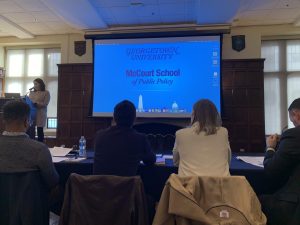
“We reached out to a lot of faculty and we reached out to the barbershops in Wards 7 and 8 and the best part was hearing from them, the store owners, speaking to them,” Prvulovic told The Hoya. “They were so enthusiastic.”
Residents of vulnerable districts experience the highest rates of hypertension, or high blood pressure, because residents in these areas have scarce opportunities to be screened for hypertension.
Prvulovic said he has noticed that a high number of patients at MedStar Georgetown University Hospital suffer from high blood pressure, which he said reflects the pervasive problem of hypertension in the District.
“Hypertension is a really big problem nationwide,” Prvulovic said. “However, D.C. has some of the highest rates in the entire country compared to cities like New York and cities throughout California, and we see those types of patients here in Georgetown Hospital all the time.”
All medical students are required to complete 20 hours of volunteer work to graduate. Following his team’s win in the Public Policy Challenge, Prvulovic said the team is in conversation with Georgetown faculty members about adding their proposal to an approved list of community service projects counting towards this requirement.
“We want to be added to that list of sites so students coming into the Class of 2028 this coming fall will have the opportunity to go to barbershops and take blood pressures,” Prvulovic said. “It’s a good way to not only learn how to take a blood pressure, but also give some information and meet people in the community.”
Clevenger said the “Trimming the Risk” project’s creative and feasible approach to a widespread D.C. health issue particularly appealed to the judges.
“The judges were very impressed by the Trimming the Risk team’s innovative solution for an important health issue that impacts too many Washingtonians,” Clevenger wrote to The Hoya. “They were also impressed by the feasibility of the team’s idea, and that due to the support they had already received from the Georgetown School of Medicine as well as from barbershop owners, that this initiative could be implemented quickly.”
Prvulovic said participating in the competition gives his team the confidence to bring their idea to fruition.
“You don’t have to be an expert at something to do to give it your best shot,” Prvulovic said. “We really want this to work and to help people.”








